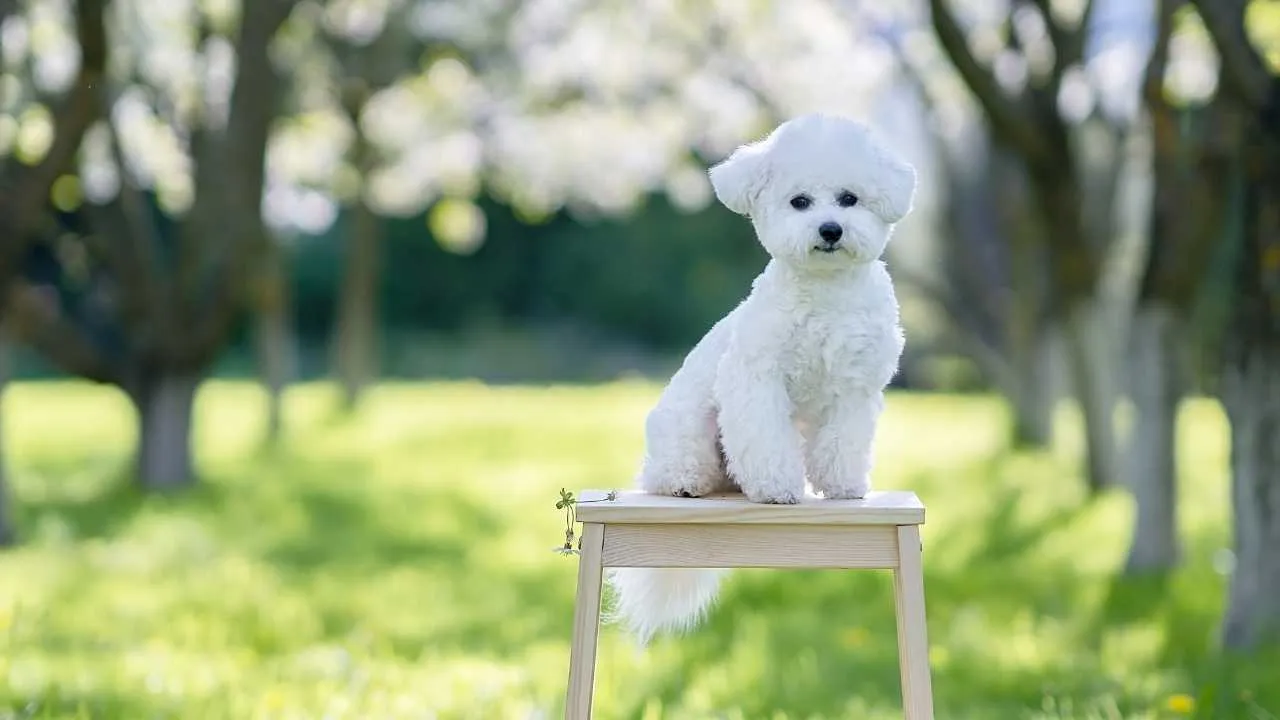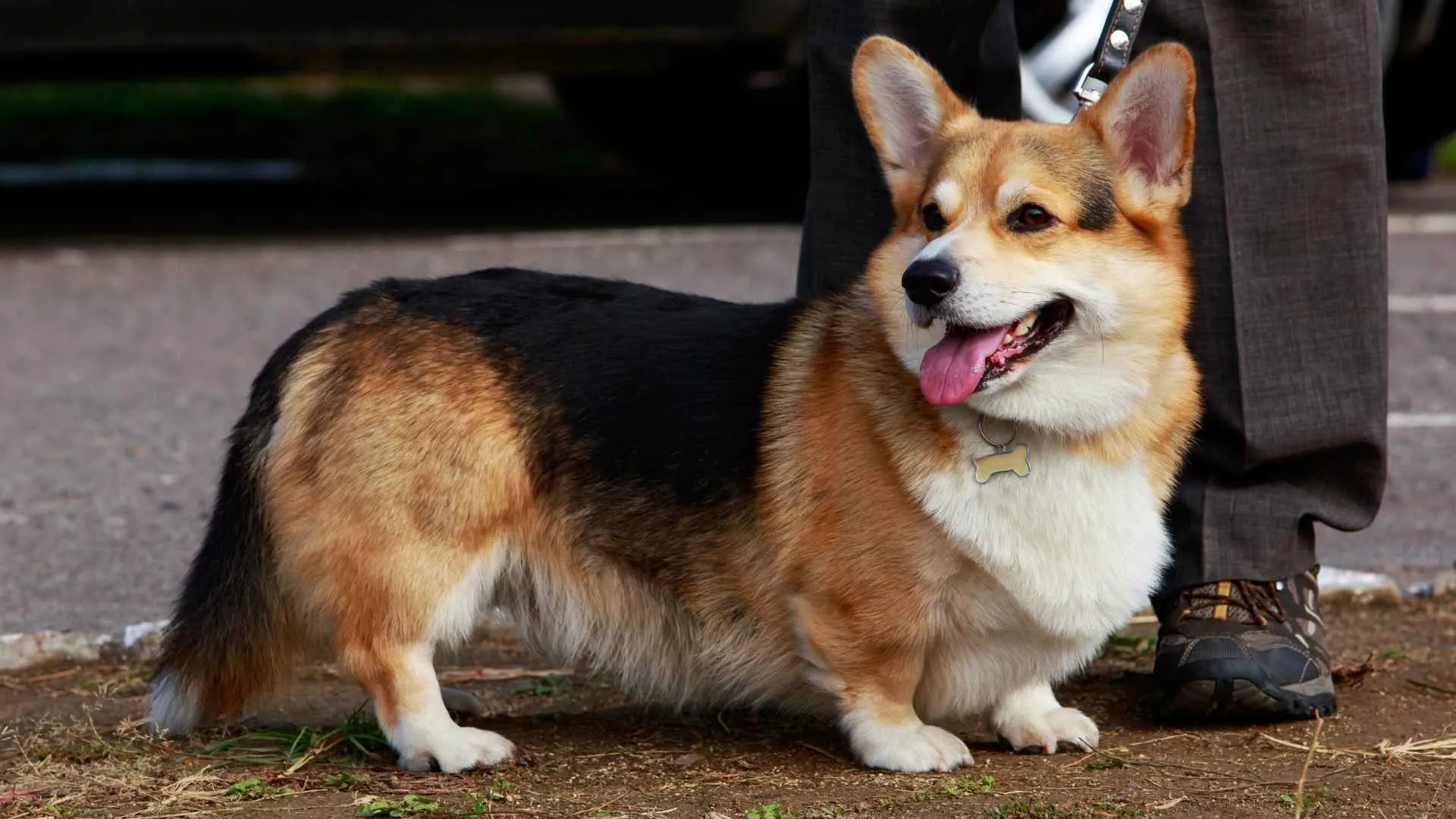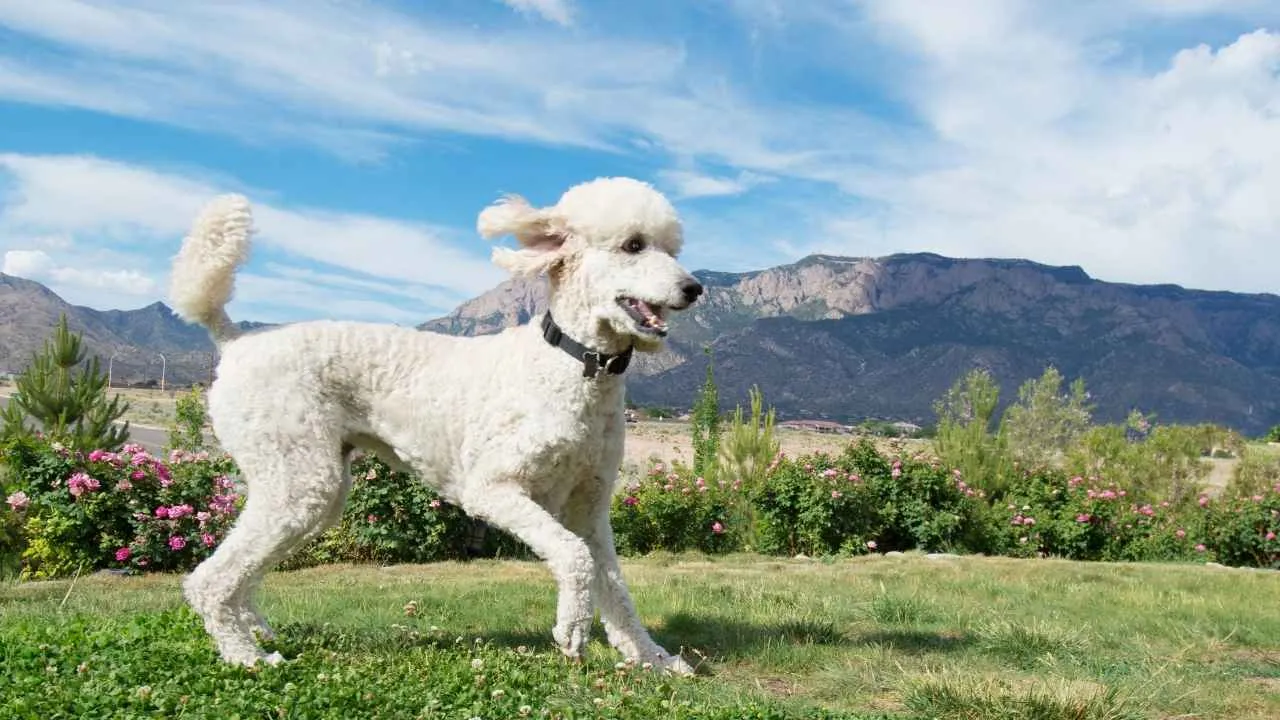Some dogs aren’t just tolerant during mealtime—they’re surprisingly generous. A study shared by the American Kennel Club (AKC) revealed that dogs were three times more likely to share food with a familiar companion than with a stranger, highlighting their capacity for social connection and selective generosity.
It’s not just a fluke—this behavior mirrors natural pack dynamics, where cooperation often leads to harmony and survival.
In homes with multiple dogs, this often leads to casual food sharing—sometimes encouraged, sometimes negotiated with a glance or a growl.
So while food can cause conflict, it’s also a window into how dogs relate to one another. Some just don’t mind making room at the bowl.
Dog breeds that share food with other dogs
Here are some of the breeds:
1. Golden Retriever

The Golden Retriever isn’t just friendly—they’re famously generous. If you’re building a household with multiple pets, this breed makes life easier. Whether it’s two dogs, a dog and a cat, or even smaller animals, the Golden Retrievers’ social nature helps keep them calm, especially around the food bowl.
These dogs genuinely enjoy interactions with other dogs and often show zero interest in guarding treats. And while it still takes good training and smart introductions, most Goldens would rather share a snack than start a fight.
Built for Teamwork and Family Life
Bred in 1800s Scotland to retrieve game from both land and water, Golden retrievers were never meant to work alone. That instinct for cooperation still shows in modern life.
They’re excellent companions for an existing adult dog, or a perfect pick if you’re adding a second dog. Golden retrievers naturally read social cues, and with proper socialization, they tend to blend into any group—be it canine or human.
Calm, Friendly, and Tolerant
Golden Retrievers are rarely possessive of resources like food or toys. They’re known for their affectionate, steady personality and their ability to share space—especially the kitchen floor—with grace.
With a little guidance, many Golden retrievers will happily wait their turn or even walk away from a half-finished bowl if another pup comes over to investigate.
Naturally Sociable, Always Eager to Please
This is a breed that thrives on interactions. Their need to be around others—whether pets, people, or new friends at the dog park—makes them ideal for families that don’t want just one dog.
Goldens love strolls, playtime, and, yes, group mealtimes. Their personality is so consistently easygoing that they’re often chosen as therapy dogs, helping people in hospitals and schools.
2. Labrador Retriever

If you’re looking for a dog that blends high energy with low drama, the Labrador Retriever fits the bill—and yes, they’re also one of the top dog breeds that share food with other dogs.
Labrador retrievers are deeply affectionate, endlessly curious, and usually more interested in play than guarding what’s in their bowl. Their enthusiasm can be a lot for a shy pet to handle, but with the right setup and pacing, they can turn into the glue of your household.
Naturally Friendly, but Needs Structure
Labrador retrievers aren’t born with perfect manners. Their excitement can come off as chaotic if you’re not guiding them. That said, they’re wired to make friends with just about any species—other dogs, cats, and sometimes even animals like rabbits or birds.
Training and early exposure to different pets help them learn rules. While they’re unlikely to be harsh, some Labrador retrievers will try to sneak bites from everyone’s bowl unless you establish clear feeding zones.
Highly Food-Motivated but Surprisingly Chill
Yes, Labradors love food—they’re known for it. But oddly enough, they’re not usually territorial about it. That’s partly due to their breed history as retrievers, where cooperation was essential.
With the right way and positive attitude, many Labs will learn to wait patiently, even if a small pup is eating beside them. For owners managing multiple canines, this makes mealtime a whole lot less stressful.
High Energy Meets Big-Hearted Personality
You won’t find a more playful, eager-to-please companion. But that energy needs an outlet—regular exercise, toys that challenge their mind, and occasional trips to new locations help them stay concentrated and well-behaved.
A bored Lab might get into trouble, especially if they’re not getting enough time with their human or pup siblings. But when mentally engaged, they’re respectful and happy to keep tranquility at home.
3. Beagle

They are built for companionship. These dogs don’t just enjoy having buddies around—they need it. If you’ve got two dogs (or plan to), they are one of the best breeds to consider.
They were bred to hunt in packs, and that background plays a huge role in how they behave at home. In a group setting, especially with other canines, they tend to be affectionate, easygoing, and treat-tolerant—as long as the environment feels safe and social.
Pack Instincts That Support Sharing
Their strong instinct to herd and stay close to their group makes them naturally suited for time with other pets. While they may not always take the lead in play, they’re rarely possessive about their things like treats.
That’s because their pack history means they’re used to eating alongside others. With the right respect, many of them show little issue sharing their space—or their snacks—with fellow dogs. Just be sure to watch for sneaky food stealing; these pups are clever.
A Curious Nose That Needs Management
Beagles are intelligent, but they’re controlled by their noses. That means your second dog is likely safe, but smaller animals like rodents or birds? Not so much. They might view them as targets rather than roommates.
That doesn’t mean it’s impossible, but careful introductions and lots of training are essential. If you’re in a household with mixed-species pets, supervision is non-negotiable. With other dogs, though, they are typically patient and highly socialized well from a young age.
Needs Company to Stay Balanced
A bored or lonely Beagle is noisy, restless. These playful pups are known for their signature baying—a sound that can fill your house if they’re left out of the action. They do best in homes where someone (human or dog) is always around.
Whether it’s during strolls, meals, or training sessions, they’re happiest when they have others. In the right setup, they’re more than willing to compromise, provided they’re getting enough mental stimulation to keep their minds busy.
4. Bichon Frise

The Bichon Frise might be small in size, but it’s big on friendliness. This small breed doesn’t just tolerate other animals—it seeks them out. If you’re building a home with multiple pets, the Bichon fits right in, showing zero hesitation in making fast friends with other dogs, cats, or whoever else is in the mix. While some breeds need structured introductions, this one often skips straight to playtime.
Sociable to the Core
What makes the Bichon stand out among dog breeds is its easygoing nature during mealtimes. These dogs don’t usually posture, guard, or snap. Their personality leans more toward inviting than defending, which means shared stuff rarely causes tension.
Especially in homes with more than one dog, they tend to navigate spaces gracefully, making them a reliable choice for people who want calm at mealtime.
Adaptable to Homes of All Shapes
Originally from the Mediterranean and once companions to sailors, the Bichon has always lived a mobile, social life. Today, they’re popular in everything from apartments to family homes. Even when space is tight, they find a way to get along.
Just make sure there’s enough time carved out for mental stimulation—they’re quick learners and love having something to focus on.
Big Personality, soft Play
Despite their circus-dog legacy and knack for learning tricks, Bichons aren’t demanding. They’re playful without being overwhelming, which means they often adjust their energy based on their playmate. A patient. They’ll dial it down. A wild younger one? Game on.
They’re especially great in homes that have a mix of pet personalities. And while they may not be fans of water (ironic, given their roots), they do love indoor play sessions and cozy cuddles afterward.
5. Pembroke Welsh Corgi

Don’t let the short legs fool you—Corgis are confident, bossy, and bold. If you’ve got multiple dogs, adding a Corgi to the mix means bringing home a canine that’s part herding dog, part hall monitor. These pups love order.
They’ll typically get along with other dogs, but they also like to lay down the instructions, especially around mealtime or toys. When it comes to being split stuff with other dogs, a Corgi can do it—but only if they feel things are fair.
Structured Personality, Strong Preferences
A Corgi thrives when a home has clear boundaries. They’re natural organizers with a sharp sense of right and wrong (at least, in their minds). If another dog tries to swipe from their bowl, the Corgi may have a few loud opinions.
This doesn’t mean they’re aggressive—just assertive. If raised with positive reinforcement, they can learn to accept dividing food, but it’s usually best to feed them in a calm, structured space where they feel in control.
Intelligent and Quick to Correct
This smart breed was originally bred for herding cattle and keeping things in line—traits that translate to modern pet life. Corgis often try to manage group dynamics and might even influence how your other pets behave.
While they’re generally fine with other pets, their herding instinct can kick in, leading to some light nipping or chasing during fun time. Matching them with gentle, easygoing (especially if you have two dogs) helps create balance and minimizes any conflicts.
Bold Energy in a Compact Frame
Between their vocal nature and bursts of “zoomies,” Corgis bring a ton of energy to a room. They may be small dogs, but they act like they’re in charge of the entire family.
That boldness can make them surprisingly good at keeping peace—ironically—because they won’t hesitate to step in if tensions rise over treats or toys. With early socialization and structured training, most Corgis will coexist well with other pets, especially in homes where feeding times are predictable and supervised.
6. Poodle

Known for their stylish curls and quick minds, Poodles are more than just pretty faces. These dogs are emotionally tuned-in, socially adaptable, and—when raised right—make excellent additions to multi-pet households.
Whether you’re introducing them to other dogs, cats, or a home full of chaos, Poodles usually rise to the occasion with calm curiosity. And while they have their diva moments (especially at the groomer), they’re surprisingly agreeable when it comes to getting along.
Social Learners with a Friendly Edge
What sets Poodles apart is their instinct to observe before reacting. If other pets are already present in the home, a well-socialized Poodle will often mirror the group’s attitude—especially during feeding time. That makes them ideal for owners trying to maintain balance between multiple dogs.
They’re not prone to nipping, guarding, or hovering over a food dish. With proper early training, many develop a kind of “live and let live” attitude—giving space without drama.
Gentle, Low-Prey Dogs with Good Manners
Though originally bred as water retrievers, modern Poodles are known for their gentle temperament and surprisingly low prey drive. That makes them safer than some breeds around small animals, and less likely to react if another dog wanders near their treats.
It’s not unusual to see a Poodle step back rather than start a standoff—especially the standard and miniature varieties, who tend to be more laid-back than the hyper-energetic toy size.
Intelligent Enough to Know Better
Let’s be real: Poodles are among the most intelligent breeds out there. That works in your favor when setting up mealtime routines. These dogs thrive on structure, understand cause and effect, and respond quickly to rules.
Whether you’re feeding two or five dogs in rotation, a well-trained Poodle will wait, watch, and adapt. They’re also deeply responsive to emotional cues from strangers, kids, and family, making them unusually in tune with the house dynamic—and less likely to cause conflicts.
7. Cavalier King Charles Spaniel

If you want a breed that fits into a multi-pet household without stirring up drama, the Cavalier King Charles Spaniel is a natural choice. These spaniels are known for their deeply affectionate personalities and strong emotional attunement to both people and pets.
They’re the type of dog that will step into a room of other animals and quietly charm everyone—no posturing, no food fights. Cavaliers are among the most polite and conflict-avoidant breeds you’ll find.
Calm Coexistence Over Competition
Cavaliers aren’t driven by dominance or aggressive habits. Instead, they tend to wait their turn at the bowl, even when grouped with more assertive dogs. Their lack of guarding attitude makes them ideal in homes where mealtimes involve multiple canines.
With proper introduction and a steady routine, this breed will adapt quickly—especially if food is spaced out to avoid competition. Their affectionate nature and deep sense of companionship help lower tension in shared environments.
Soft Playmates, Not Rule Enforcers
Cavaliers don’t try to manage or correct the attitude of others. They’re non-confrontational by design. That makes them especially suited to homes where there’s already one dog or even a mix of ages and temperaments.
Whether it’s a senior pet or a new puppy, a Cavalier blends in smoothly, never asserting dominance over things. They may hover nearby during treats, but it’s rare to see them claim more than their fair share.
Adaptable and Eager to Belong
This is a breed that craves emotional connection more than control. Whether you’re going on short walks, staying in for the evening, or feeding the pack, they want to be part of the action without disrupting it.
Their sensitivity to emotional shifts—like excitement or stress around mealtimes—means they tend to follow the vibe of the room. If everyone else is calm, they are too. And when raised in a home with multiple pets, they often become the gentle thread holding everyone together.
Conclusion
Luckily, several breeds have natural traits that support food-sharing: a low prey drive, high sociability, and an ability to adapt to group dynamics. But even the most agreeable puppies need a foundation of trust and routine. That’s where your skills come in—setting clear limits, feeding schedules, and calmly introducing puppies to their new packmates.
In the end, the goal isn’t just peace at dinnertime—it’s building a home where every dog feels safe, respected, and part of the pack. With a little effort and the right breed match, that kind of balance is completely within reach.


